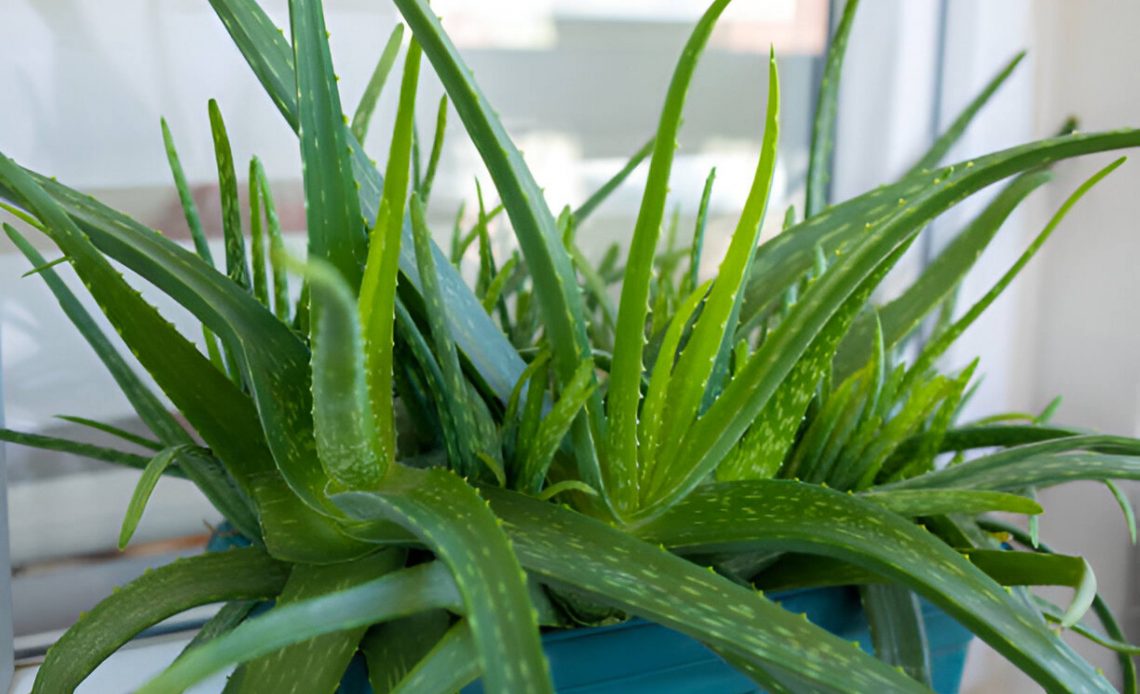
There are many plants for clean air. So which air purifying plants are good for you? The answer to this question may also depend on whether you have children or pets in your home. Of course, plant care is also important. I’m here to help you choose a good plants for clean air.
Houseplants not only add color and texture to our living spaces but also contribute to our physical and mental well-being. According to a landmark study by NASA, certain houseplants can purify the air by filtering out toxic chemicals like formaldehyde, benzene, and trichloroethylene. These greens not only refresh the air but also provide allergy relief, improve sleep quality, and reduce stress levels. When choosing air-purifying plants, consider aesthetics, pet-friendliness, and ease of care. Let’s explore some of the best options that will elevate your home decor while keeping the air clean and fresh.
Best Indoor Plants that Clean The Air
Here’s a table summarizing some of the best houseplants for clean air, including their features:
| Plant Name | Light Requirements | Watering Needs | Toxins Removed | Other Benefits |
|---|---|---|---|---|
| Snake Plant (Sansevieria trifasciata) | Low to bright indirect light | Drought tolerant (water every 2-4 weeks) | Formaldehyde, benzene, trichloroethylene | Low maintenance, air-purifies at night |
| Spider Plant (Chlorophytum comosum) | Medium to bright indirect light | Moderate (water when soil feels dry to the touch) | Formaldehyde, benzene, carbon monoxide | Easy to propagate, produces baby spiderettes |
| Aloe Vera (Aloe barbadensis Miller) | Bright, indirect light | Drought tolerant (water sparingly) | Low levels of formaldehyde | Topical application for burns and skin irritations |
| Peace Lily (Spathiphyllum wallisii) | Low to medium indirect light | Moderate (water when soil feels dry) | Formaldehyde, benzene, ammonia, trichloroethylene | Low maintenance, indicates watering needs with drooping leaves |
| Boston Fern (Nephrolepis exaltata) | Medium to bright indirect light | Consistent moisture (avoid soggy soil) | Formaldehyde, benzene, xylene | Increases humidity |
If you’re looking for the best indoor plants to combat indoor air pollution, look no further! Here are 20 top choices, each with their own unique benefits and lifespans:
1. English Ivy (Hedera helix)

English ivy may help improve respiratory health by thinning mucus and reducing inflammation in the airways. It may also have some antioxidant effects. However, it is important to note that English ivy can be toxic if ingested and should be kept out of reach of children and pets. In Victorian times, English Ivy symbolized fidelity. Moreover, it is quite simple to propagate this very useful plant. A few minutes are enough for English Ivy propagation.
Air Purifying Champion: This elegant vine tackles harmful chemicals like formaldehyde, a common offender in household cleaners.
Easy Caregiver’s Dream: English Ivy thrives in most light conditions and requires infrequent watering.
Long Life Partner: With proper care, English Ivy can become a cherished companion for decades.
2. Bamboo Palm (Chamaedorea seifrizii)
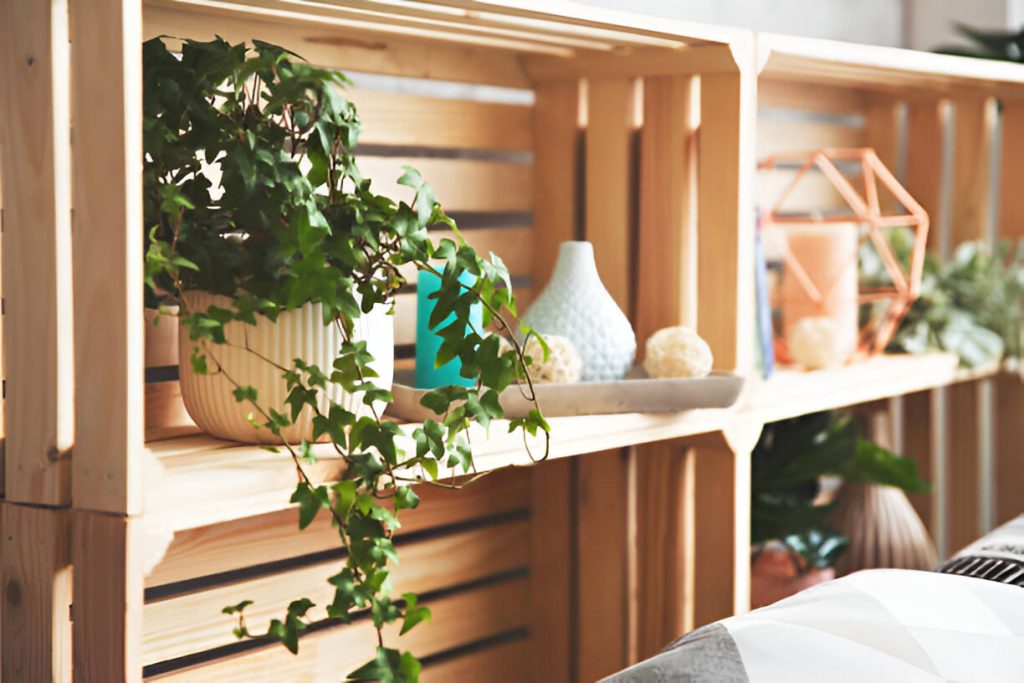
Bamboo palms are known for their air-purifying properties. They can help remove toxins like formaldehyde and benzene from the indoor environment. So it is one of the best indoor plants for clean air. In Chinese culture, bamboo symbolizes longevity, strength, and good luck.
Low-Light Superhero: This low-light lover effectively combats benzene, a toxin found in paints and new carpets.
Humidity Lover: While not high-maintenance, Bamboo Palm prefers moderate humidity. Misting or using a pebble tray can help.
Lifelong Friend: With proper care, Bamboo Palm can live for many years, even decades.
3. Chinese Evergreen (Aglaonema modestum)
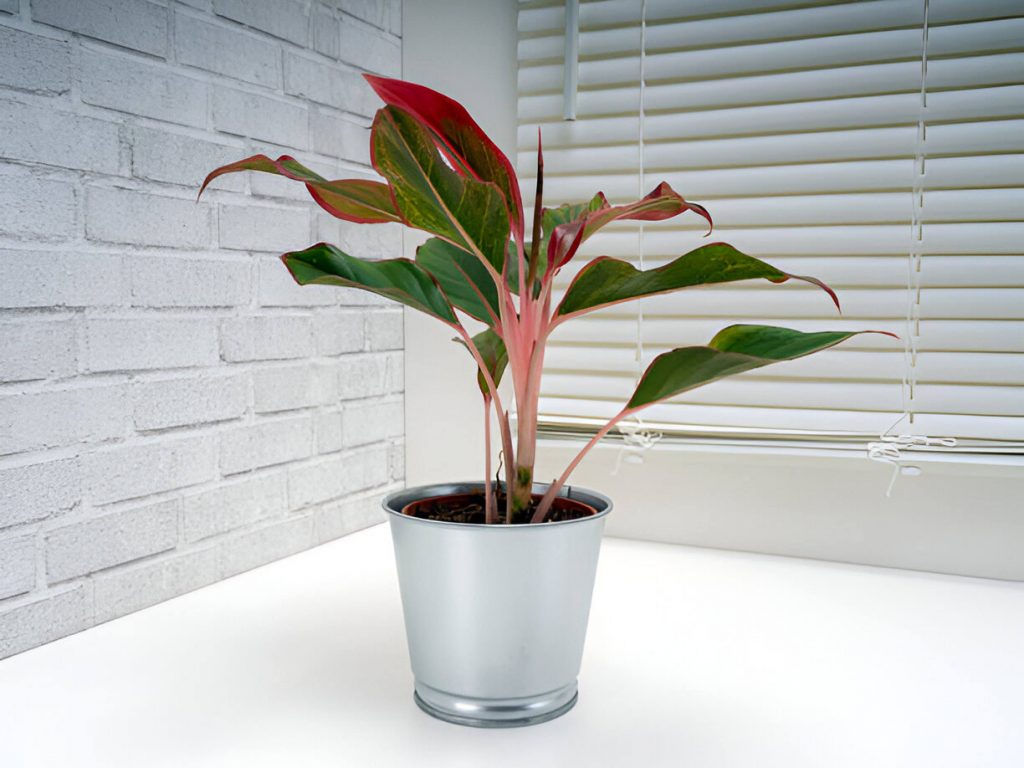
Similar to bamboo palms, Chinese evergreens are effective at removing toxins like formaldehyde and benzene from indoor air. So, it is one of the best house plants for health.In Feng shui, Chinese evergreens are believed to bring positive energy and prosperity to a home.
Beautiful Toxin Fighter: A beautiful foliage plant, the Chinese Evergreen improves air quality by removing common toxins.
Shade Seeker: This plant prefers indirect light and thrives in most indoor environments.
Long-Lasting Beauty: The Chinese Evergreen can live for many years with proper care. Also Moreover, it is quite simple to propagate this very useful plant. A few minutes are enough for Chinese Evergreen propagation.
4. Gerbera Daisy (Gerbera jamesonii)
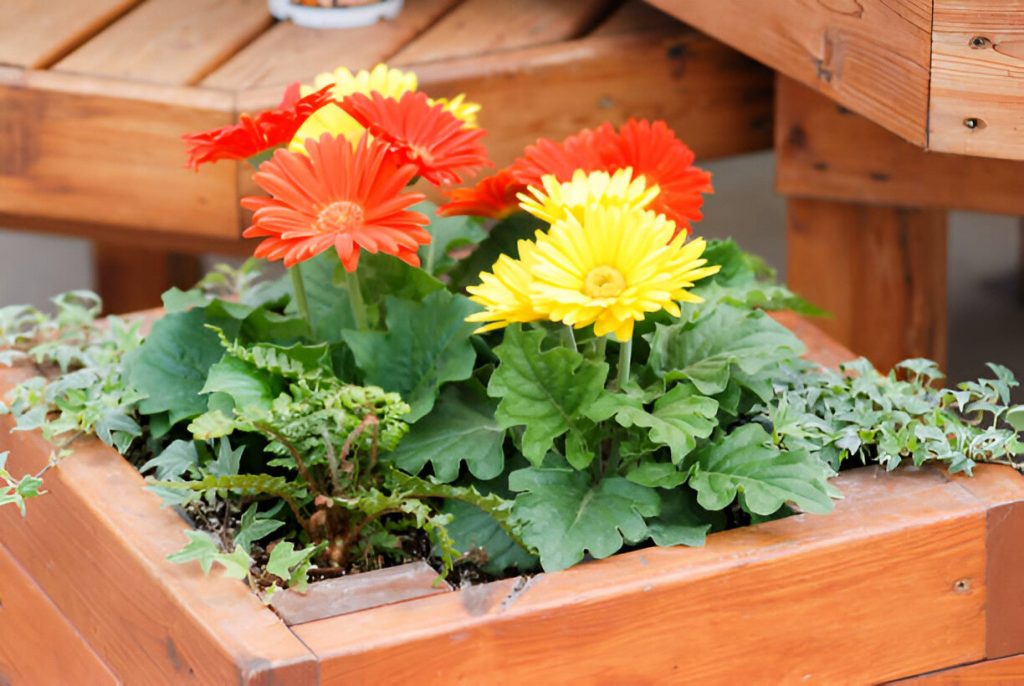
Brighten your day and your air with the Gerbera Daisy! This cheerful flower helps remove benzene and other pollutants. Also Gerbera Daisies need plenty of bright, indirect sunlight to thrive. With proper care, you can enjoy blooms from your Gerbera Daisy for several years.
Gerbera daisies are known to brighten moods and reduce stress. They may also help improve air quality by removing small amounts of airborne pollutants. Gerbera daisies generally symbolize purity, innocence, and cheerfulness. Different colors can have specific meanings, for example, red gerberas symbolize love and passion.
5. Dragon Tree (Dracaena marginata)

Dragon trees are excellent air-purifying plants. They can help remove toxins like formaldehyde, benzene, and trichloroethylene from the indoor environment. So, it is one of the best indoor plants for clean air. In Feng shui, dragon trees are believed to bring good luck and prosperity. Because they are one of the good luck plants. They are also said to symbolize strength and resilience.
Tropical Flair and Clean Air: This striking plant with its colorful-edged leaves enhances air quality and adds a touch of the tropics to your home.
Easy on the Eyes, Easy to Care For: The Dragon Tree thrives in most light conditions and requires infrequent watering.
Long-Living Housemate: With proper care, a Dragon Tree can live for decades.
6. Mother-in-Law’s Tongue (Sansevieria trifasciata ‘Laurentii’)
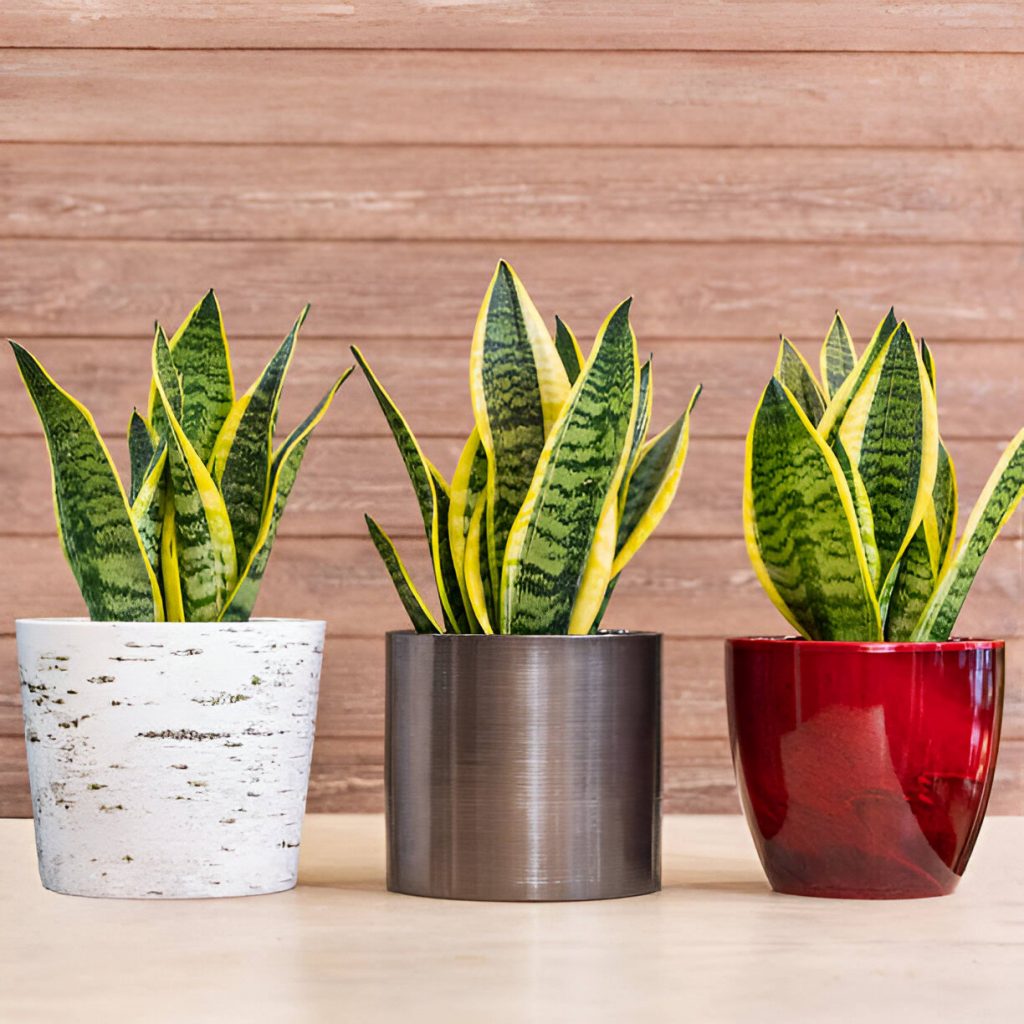
Mother-in-Law’s Tongue (snake plant) is a powerful air-purifying plant. It can remove common toxins like formaldehyde, benzene, and trichloroethylene from indoor air, and it can even convert carbon dioxide into oxygen at night. Because of its sharp leaves and hardiness, Mother-in-Law’s Tongue or snake plant meaning has come to symbolize protection and defense.
Architectural Wonder and Toxin Fighter: Also known as Snake Plant, this architectural wonder thrives in low light and removes toxins like formaldehyde from the air.
Nearly Indestructible: The Snake Plant is nearly impossible to kill, requiring minimal watering.
Live for Decades: With neglect-tolerant care, Snake Plants can live for decades.
Snake plant benefits are many. For this reason, you may want to have this plant in every room or area. It is a great gift option. Moreover, snake plant propagation is quite easy.
7. Pot Mum (Chrysanthemum morifolium)

Pot Mums may help improve air quality by removing low levels of ammonia and benzene from the indoor environment. So, it is one of the best indoor plants for clean air. Chrysanthemums have a variety of meanings depending on the culture. In Japan, they symbolize longevity and rejuvenation. In China, they represent happiness and good luck.
More Than Just Fall Flair: Not just for fall, Pot Mums are natural air fresheners, removing pollutants and adding a pop of color to your space.
Seasonal Showstopper: Pot Mums typically flower in the fall, but with proper care, you can sometimes coax them to bloom again in spring.
Short-Lived Beauty: Pot Mums are typically enjoyed for one season, but they can be propagated to create new plants.
8. Peace Lily (Spathiphyllum ‘Mauna Loa)
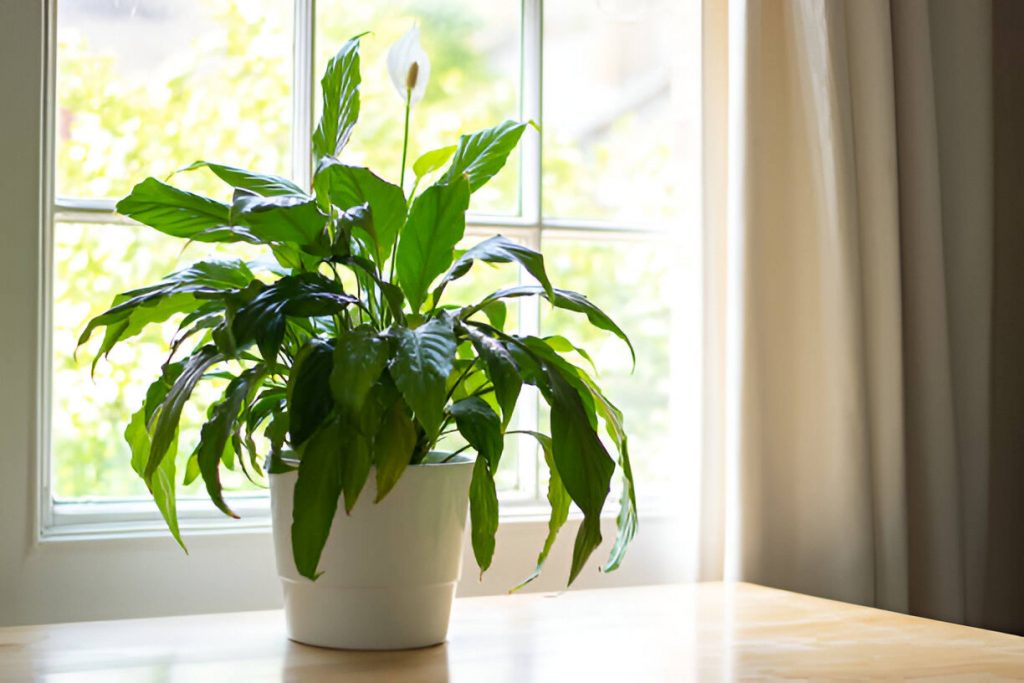
Peace lilies are well-known for their air-purifying properties. They can remove toxins like formaldehyde, benzene, ammonia, and trichloroethylene from indoor air. As the name suggests, peace lilies symbolize peace and tranquility. They are also often associated with new beginnings.
Elegant Air Purifier: This elegant plant boasts white flowers and air-purifying properties, removing common household toxins.
Low-Light Lover: The Peace Lily thrives in low light conditions and prefers moist soil, but not soggy.
Long-Lasting Beauty: With proper care, Peace Lilies can live for many years.
9. Spider Plant (Chlorophytum comosum ‘Vittatum)
Spider plants are excellent air-purifying plants. They can remove a variety of toxins from indoor air, including formaldehyde, benzene, and carbon monoxide. Spider plants symbolize new beginnings and adaptability.
Easy Caregiver’s Delight: A classic choice, the Spider Plant is easy to propagate and removes a variety of toxins while cascading gracefully from its pot.
Adaptable and Easygoing: This plant tolerates a wide range of light conditions and requires infrequent watering.
Spiders for Years: Spider Plants can live for many years and produce baby spiderettes that can be easily propagated into new plants.
10. Mass Cane/Corn Plant (Dracaena fragrans ‘Massangeana’)
Mass canes are effective air-purifying plants. They can remove toxins like formaldehyde, benzene, trichloroethylene, and xylene from indoor air. In Feng shui, mass canes are believed to bring good luck and prosperity.
Air-Purifying Powerhouse: This popular plant is known for its air-purifying prowess and its architectural presence.
Low-Maintenance Majesty: The Mass Cane thrives in bright, indirect light and requires infrequent watering.
Long-Living Companion: With proper care, a Mass Cane can live for decades.
11. Rubber Tree (Ficus elastica)
Rubber trees can help improve air quality by removing toxins like formaldehyde and benzene from the indoor environment. So it is one of the best house plants for clean air.
Striking and Low-Maintenance: A striking and low-maintenance choice, the Rubber Tree removes common toxins while adding a touch of sophistication to your decor.
Bright Light Seeker: The Rubber Tree prefers bright, indirect light and enjoys consistent moisture in the soil.
Long-Lasting Houseplant: With proper care, Rubber Trees can live for many years and grow quite large.
12. Lemon Button Fern (Nephrolepis cordifolia)

Lemon button ferns are known for their air-purifying properties. They can help remove toxins like formaldehyde, benzene, and xylene from indoor air. They may also help increase humidity levels in your home. Not many symbolic meanings are associated with lemon button ferns, but their lush foliage can represent growth and new beginnings.
Humidity Lover and Air Purifier: This fern thrives in humid environments and removes common toxins from the air.
Requires Consistent Moisture: Misting regularly or using a pebble tray is recommended to maintain humidity.
Long-Living with Care: Lemon Button Ferns can live for many years with proper care.
13. Pothos (Epipremnum aureum)
Pothos is a popular air-purifying plant. It can remove toxins like formaldehyde, benzene, and toluene from indoor air. In Feng shui, pothos is believed to symbolize wealth and prosperity.
Easygoing Climber: The Pothos is a versatile climber that tolerates a wide range of light conditions and removes common toxins from the air.
Nearly Indestructible: This easy-to-care-for plant requires minimal watering.
Thrives for Years: With proper care, Pothos can live for many years and grow quite long.

14. Philodendron
There are many varieties of philodendron, and most offer some level of air purification. They can help remove toxins like formaldehyde, ammonia, and xylene from indoor air. So it is one of the good indoor plants that clean the air. Philodendrons symbolize new beginnings and growth due to their climbing nature.
Variety is the Spice of Life: Philodendrons come in a wide variety of shapes and sizes, all offering air-purifying benefits.
Light and Watering Needs Vary: Research the specific Philodendron variety you choose to determine its light and watering requirements.
Long-Lasting Beauty: With proper care, Philodendrons can live for many years.
15. Parlor Palm (Chamaedorea elegans)
Parlor palms are effective air-purifying plants. They can remove toxins like formaldehyde, benzene, and ammonia from indoor air. They may also help increase humidity levels in your home. Parlor palms symbolize peace and tranquility due to their elegant appearance.
Low-Light Champion: This shade-loving palm effectively removes toxins and adds a touch of elegance to your space.
Humidity and Watering: While low-maintenance, Parlor Palm prefers moderate humidity and consistent watering.
Long-Lasting Majesty: With proper care, Parlor Palms can live for many years.
16. Aloe vera (Aloe barbadensis Miller)

Unlike most houseplants, aloe vera isn’t primarily known for air purification. However, it’s well-regarded for its topical application to soothe burns and skin irritations. In our opinion, it is the best houseplant for health. Aloe vera is often seen as a symbol of healing and protection.
More Than Just a Burn Healer: This succulent not only soothes sunburns but also removes common toxins from the air.
Sun-Loving and Drought-Tolerant: Aloe vera thrives in bright, indirect light and requires infrequent watering.
Long-Living with Neglect Tolerance: Aloe vera is known for its resilience and can live for many years with minimal care.
17. Broad Lady Palm (Rhapis excelsa)
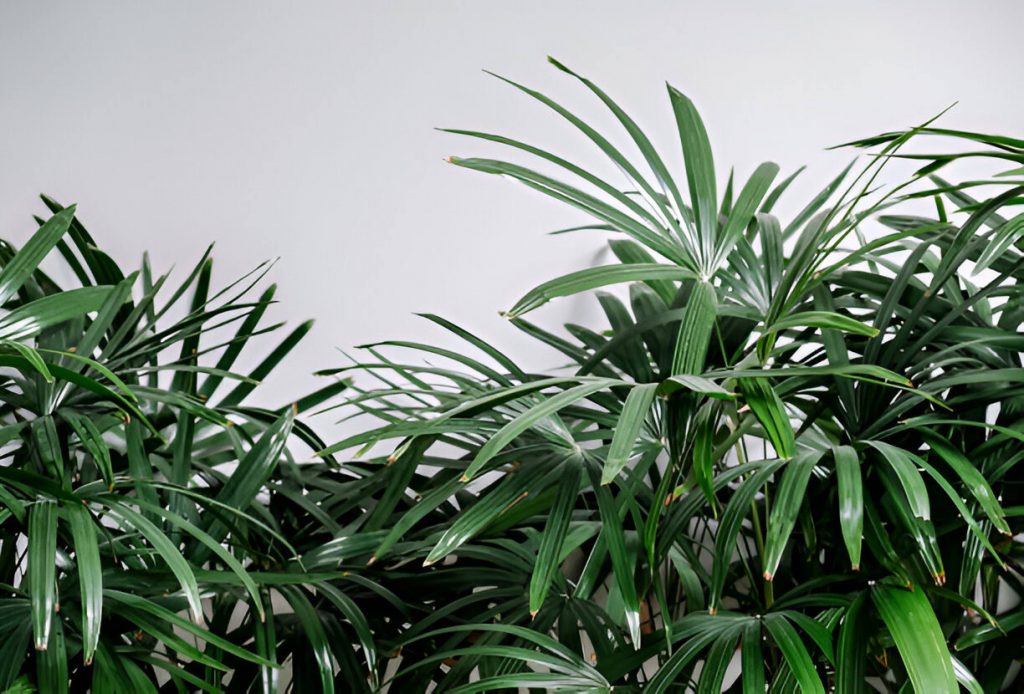
Broad lady palms are air-purifying plants. They can help remove toxins like formaldehyde, ammonia, and xylene from indoor air. They may also help increase humidity levels in your home. In Feng shui, broad lady palms symbolize longevity and good fortune
Shade-Loving Air Purifier: This slow-growing palm is perfect for low-light areas and helps remove toxins from the air.
Water Wise: Broad Lady Palm requires infrequent watering, making it ideal for forgetful plant owners.
Long-Lasting Investment: With proper care, Broad Lady Palms can live for decades and grow quite large.
18. Fittonia ‘Frankie’ (Fittonia argyroneura)

While not the most significant air purifier, Fittonia plants may help remove some low levels of toxins like formaldehyde. They are better known for adding humidity to the air. There isn’t a widely recognized symbolism for Fittonia plants.
Vibrant Air Purifier: This small plant boasts beautiful, colorful veins and removes common toxins from the air.
Humidity Lover: Fittonia thrives in humid environments and requires consistent moisture.
Short-Lived Beauty: While not as long-lived as others, Fittonia can be propagated to create new plants.
19. Ficus (Ficus benjamina)
Ficus trees can help improve air quality by removing toxins like formaldehyde and benzene from the indoor environment. However, they can irritate skin and eyes if touched or if the sap comes in contact, so be cautious if you have pets or small children In Feng shui, ficus trees are believed to symbolize prosperity and good luck.
Air-Purifying Tree: This popular houseplant removes toxins and adds a touch of tropical flair to your home.
Bright Light and Consistent Moisture: Ficus prefers bright, indirect light and enjoys consistent moisture in the soil.
Long-Lasting with Care: With proper care, Ficus trees can live for many years and grow quite large.
20. Flamingo Lily (Anthurium andraeanum)
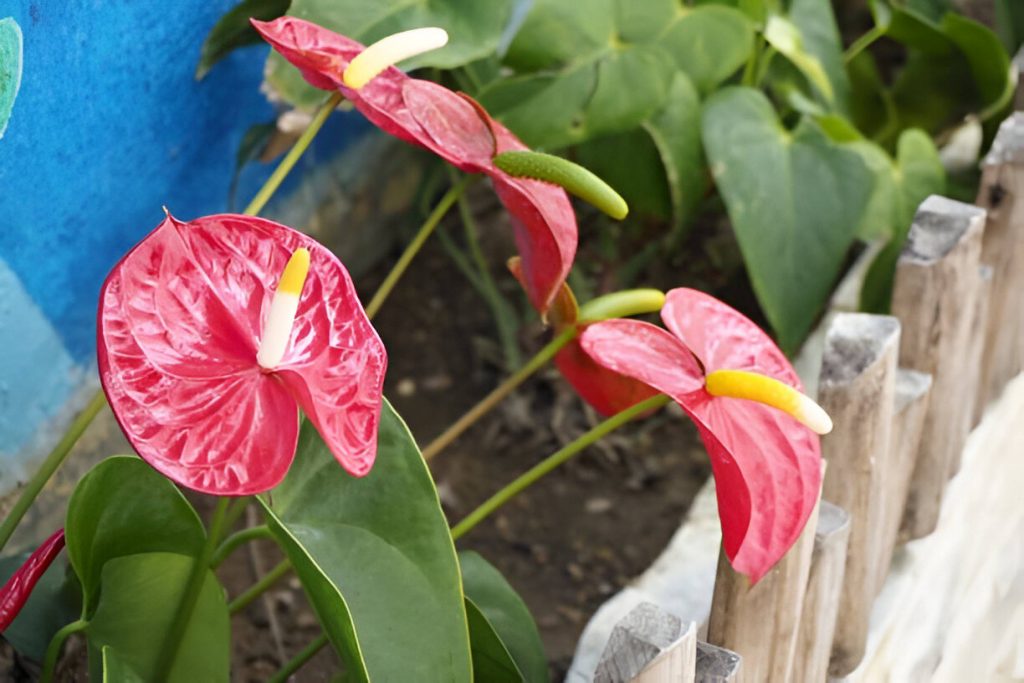
Flamingo lilies can help improve air quality by removing low levels of ammonia from the indoor environment. So it is one of the good indoor plants for clean air. However, the flowers and berries are toxic if ingested, so keep them out of reach of children and pets. Flamingo lilies symbolize love, passion and rebirth due to their vibrant flower colors.
Elegant Bloomer and Air Purifier: This tropical beauty boasts vibrant flowers and removes common toxins from the air.
Warmth and Moderate Humidity: Flamingo Lily prefers warm temperatures and moderate humidity.
Blooms for Years: With proper care, you can enjoy blooms from your Flamingo Lily for several years. However, the flowers may not last permanently.
FAQs about The Best 20 House Plants For Clean Air
Is There Any Science Behind Air Purifying Plants?
In short, yes. Plants can absorb some toxins and improve oxygen levels, but the science has limitations. The famous NASA study showed promise, but in a controlled environment. Ventilation remains key for clean air, with plants as a helpful supplement.
How Many Plants Do I Need to Purify a Room?
NASA Recommendation: Suggests 2-3 medium plants per 100 sq ft, which can be impractical for smaller spaces.
What’s the Best Low-Maintenance Air Purifying Houseplant?
For low-maintenance air purification, consider the Snake Plant – a watering champion that thrives on neglect. It tackles toxins and adds a modern touch. Alternatively, the Spider Plant is easy to care for, removes toxins, and rewards you with cute baby plants for propagation!
